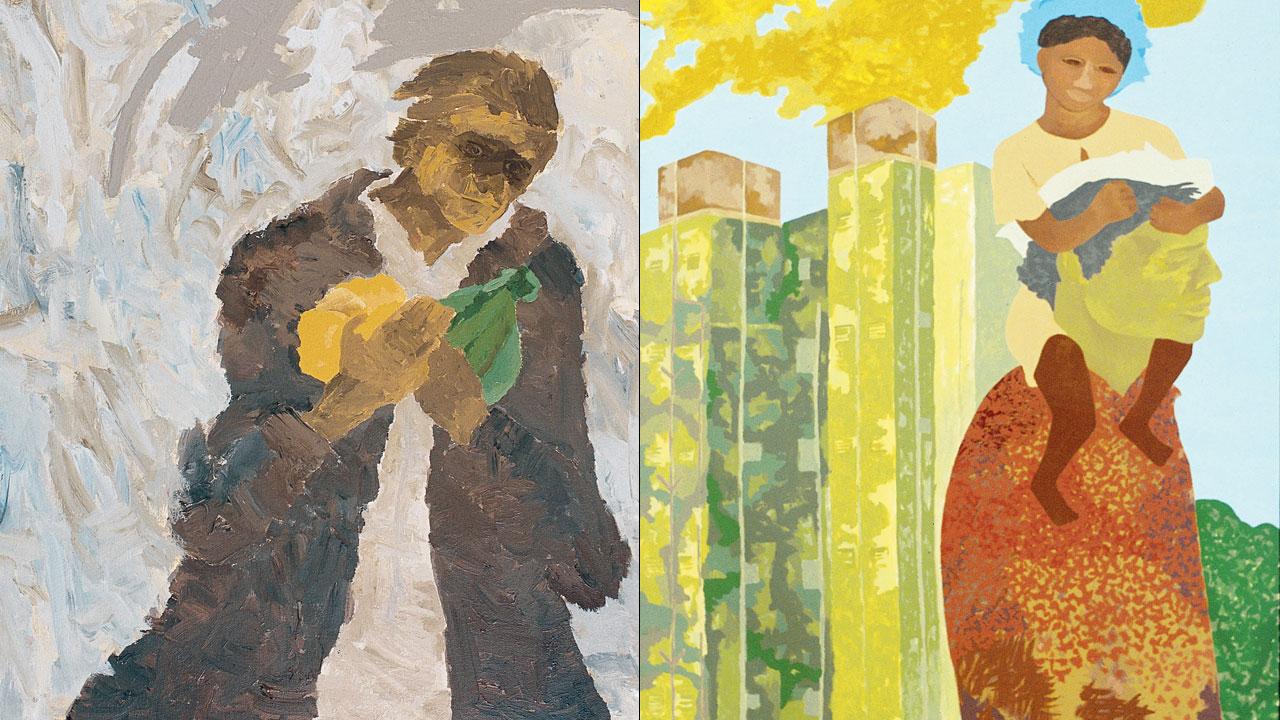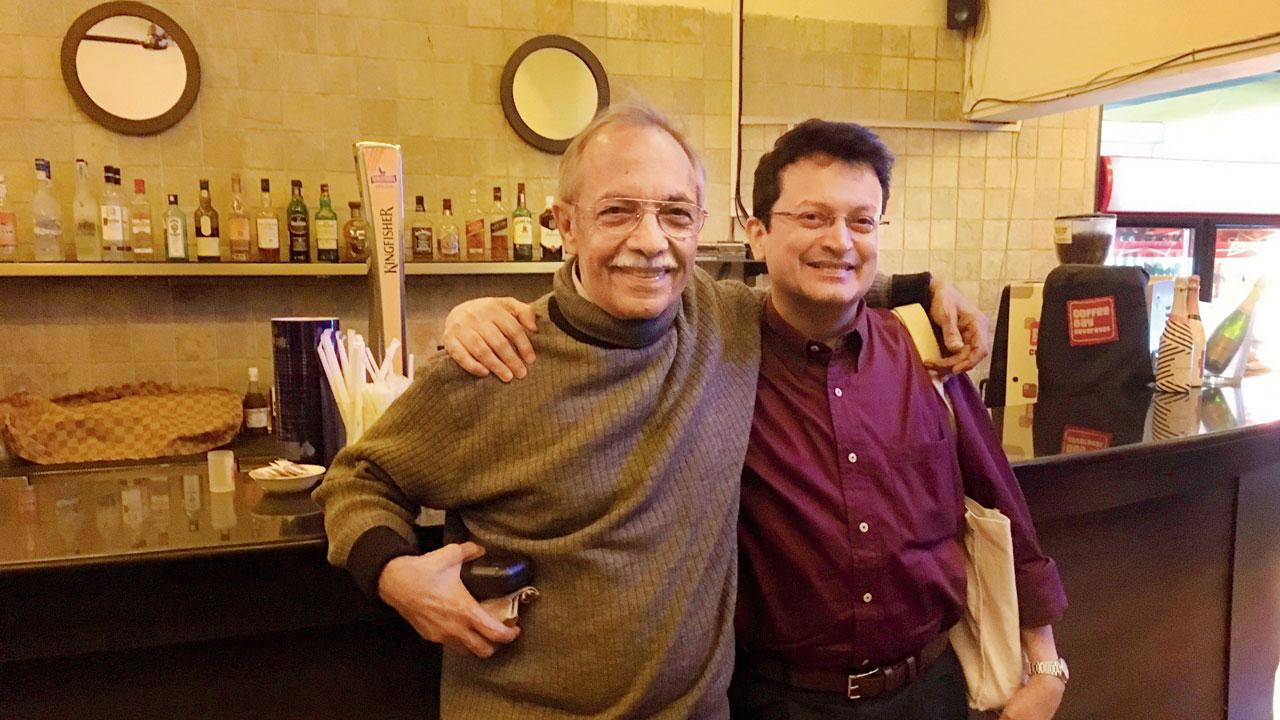Most of us knew Gieve Patel through his poems. This new book of essays by Ranjit Hoskote explores 30 years of the artist as painter and sculptor

Off Lamington Road, 1982. Pics Courtesy/Galerie Mirchandani + Steinruecke
Poet, art critic, and scholar Ranjit Hoskote’s book of essays on late Gieve Patel’s art, To Break and To Branch (Seagull Books), is a beautiful nod to a friendship he shared with the painter. It is also an acknowledgement of the legacy Patel left behind as an artist. To know Bombay (today’s Mumbai), his paintings whispered to us, is to know it through its people.
In the six essays, Hoskote directs our eye to Patel’s assiduity in finding untold stories — “the private drama” — of the characters who make the city. Among them, we witness a street performer at the BEST bus stop with a garland around his neck; an illiterate Andhra migrant worker dictating a letter to be sent home; a boy enjoying a slice of mango; a man running in the rain with bread and bananas; a typical scene from Off Lamington Road. We also encounter the wounded, the mourners, and the aged. “Gieve Patel’s testimony is important,” shares Hoskote, when we catch up with him over a call. “His Bombay was not self-enclosed. Through his characters, you also understand the deep connection that the city has to its hinterland. You see the circulations through which people come to the city for work,” he tells us.

(From left) Man in the Rain with Bread and Bananas, 1990; Stroll, 1997
The first few essays, especially, attest to Patel’s challenge to portraiture. In depicting asymmetries and imperfections, he reconceptualised the ideas of beauty. Against the backdrop of the Bombay High Court, or the high-rises of the city’s financial quarters, Patel showed us figures who are not only everyday men and women, but also anti-heroic in their appearance, with malformations, mutilations, or wounds. Hoskote points us to their “protruding teeth, hunched shoulders, uneven features, rickety frames, and tubercular fingers”. Through these details, we are urged to dwell on the socio-economic conditions that led to the moments frozen in the paintings and the consequences of marginalisation.
When an artist paints characters picked up from the sidelines, what is the position they take? Hoskote addresses this by calling Patel ‘a complicit observer’ — a title he’s previously accorded to his contemporary, Sudhir Patwardhan as well. He elaborates, “Sometimes there’s a fiction that if you’re an artist or a writer, you’re outside your material. To get any kind of writing or painting done, you must obviously have some kind of a critical distance. But as a human being, the choice to represent another human being connects you to their predicament. You bring to that moment everything that defines you. If you’re an upper middle-class person painting peasants or workers, the class asymmetry is part of the contract of representation. It can’t be a neutral act.”
 Gieve Patel with Ranjit Hoskote
Gieve Patel with Ranjit Hoskote
Patel did not shy away from depicting violence and injustice, Hoskote notes succinctly when writing about the artist’s choice. His politics lay in showing the subaltern figures almost always as survivors than victims. The titular essay looks most closely at this through his sculptures, which take us back to the myth of Daphne and Eklavya, two figures who broke but also branched. Curious, we ask Hoskote if the phrase ‘breaking and branching’ defines the spirit of the city as well. “The title came around intuitively. I wanted it to come from one of the essays in it. But it also speaks of Gieve Patel. It connects to the advice he gave me, which is to go deeper to where things are broken. But he also meant that don’t wallow in it.” He adds, “But you’re right — it also stands in for Bombay’s famous resilience,” although it is uncertain how long that will last. To him though, that phrase remains “a life lesson and an artistic manifesto.”
 Subscribe today by clicking the link and stay updated with the latest news!" Click here!
Subscribe today by clicking the link and stay updated with the latest news!" Click here!










